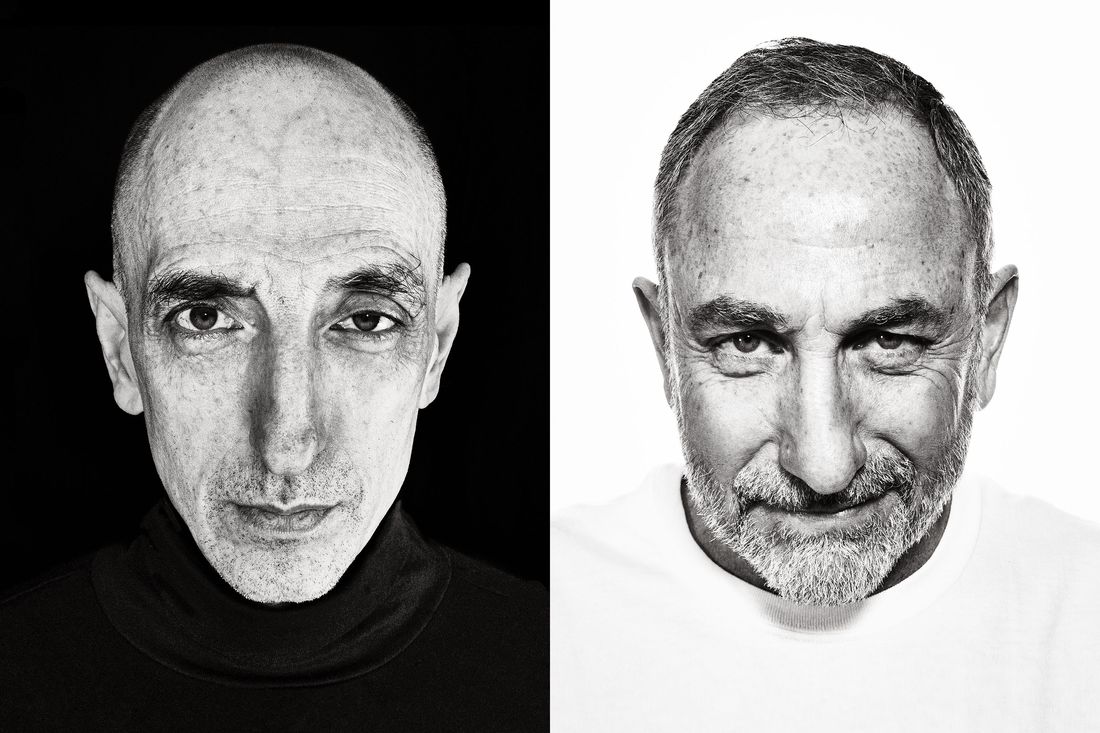
When Jim and Tim Clemente were growing up in Queens, their mother, a nurse, hoped they would go into medicine. Her sons had other ideas. It was the late 1960s, and gruff, heroic cops were always on TV, sprinting down alleys and tackling suspects. The brothers were temperamentally distinct ÔÇö Jim was the thoughtful outsider, inclined to think his way through problems, while Tim was the adrenaline junkie with an uncanny ability to withstand pain. But they both agreed that catching bad guys seemed like a fun thing to do for a living. ÔÇ£Jim wanted to be a detective,ÔÇØ Tim told me. ÔÇ£I wanted to be a cop.ÔÇØ The brothers eventually got their way, and by the 1990s, both were working as FBI agents. Although their career paths were similar, their differences persisted. ÔÇ£I like to get into offendersÔÇÖ minds, to figure out how they tick,ÔÇØ Jim told me, whereas Tim ÔÇ£says he likes to get into an offenderÔÇÖs mind with a .308-caliber sniper bullet.ÔÇØ
Thirteen years ago, the Clementes pivoted from the FBI to Hollywood, where they founded a production company, XG, that has become a force in the true-crime industrial complex at a time when viewers canÔÇÖt seem to get enough of murder. This week marks the launch of their highest-profile project to date, a reboot of FoxÔÇÖs fugitive-hunting juggernaut AmericaÔÇÖs Most Wanted.
The program debuted on Fox in 1988, the year of the Willie Horton ad and rising murder rates. It tapped into audiencesÔÇÖ preoccupation with crime, featuring interviews with weeping victims interspersed with grainy re-creations of kidnappings and gang shootings. Alongside Cops, which premiered a year later, AMW became a staple of the brash new networkÔÇÖs law-enforcement-themed Saturday-night lineup. Host John Walsh stood in front of a set mocked up to look like an incident-response center, with a flock of phone operators standing by to pass viewersÔÇÖ tips to police. The show kept a running tally of the fugitives it helped capture ÔÇö more than a thousand, by its own count, over the course of its 25ÔÇ»seasons. The message was clear: AMW wasnÔÇÖt just entertainment; it was a vital tool in the war against crime. ÔÇ£ItÔÇÖs a show that feels, looks, and sounds like a cop,ÔÇØ as one reviewer described it at the time.
On the surface, 2021 is a volatile time to bring the show back. Violent-crime rates are half of what they were when AMW premiered. (ÔÇ£Is that true? I didnÔÇÖt know that,ÔÇØ FoxÔÇÖs head of unscripted content, Rob Wade, said when I pointed this out. ÔÇ£ThatÔÇÖs fantastic!ÔÇØ) Depicting members of law enforcement as straightforward heroes doesnÔÇÖt sit the same less than a year after a Minneapolis police officer killed George Floyd. ÔÇ£ItÔÇÖs so interesting that they think they can reboot a show like that when a lot of production companies are really having to rethink the ethical dimensions of crime programming postÔÇôBlack Lives Matter,ÔÇØ said David Schmid, a professor at the University at Buffalo who writes about crime and popular culture. ÔÇ£I donÔÇÖt know how successful itÔÇÖs going to be.ÔÇØ
But Fox ÔÇö and the Clementes ÔÇö are banking on the idea that, despite progressive calls to reform the police, a large segment of the population is still eager to see people with badges and guns put bad guys away. Or even help them do so: In the days after the siege of the U.S. Capitol, Wade watched internet sleuths put names to pixelated images of rioters and thought the impulse toward DIY detection bode well for the reboot. ÔÇ£I remember going, This is it,ÔÇØ Wade told me. ÔÇ£People were sort of catfishing them, pretending to date them and turning them in to the police. IÔÇ»donÔÇÖt think weÔÇÖre going to be using those kinds of tactics. But it created a kind of community movement to solve crime, which is exactly what weÔÇÖre aiming at.ÔÇØ
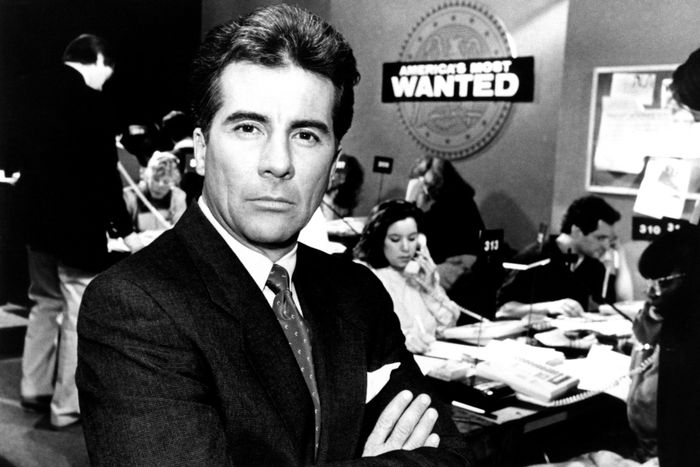
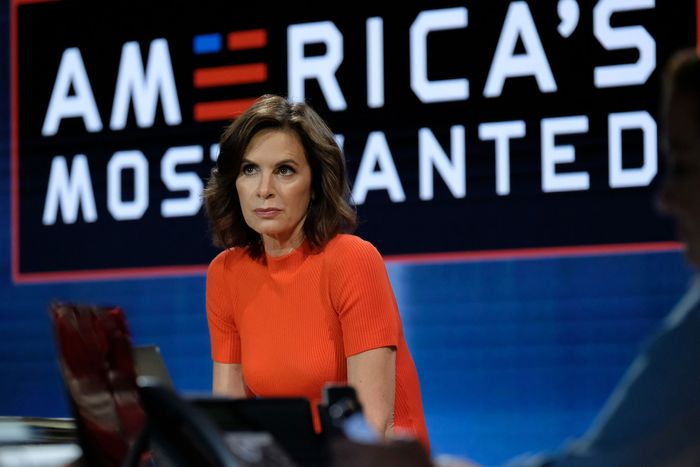
By now, after a decade in Hollywood, Jim and Tim Clemente are practiced at distilling their careers into propulsive narratives of heroism and hard-won justice. JimÔÇÖs account of how he came to join the FBI, in particular, has a fated quality. In 1986, he was working as a prosecutor in Manhattan when another of his brothers (there are six siblings in all) made an offhand comment about Michael OÔÇÖHara ÔÇö the head of a Catholic summer camp they had attended as teenagers ÔÇö and his stash of obscene Polaroids of teenage boys.
Jim had spent years trying to avoid thinking about OÔÇÖHara, who had sexually assaulted him a decade earlier, when he was 15. Jim had confided in his school guidance counselor about the abuse at the time and was instructed to say ten Hail Marys and never speak of it again. His experience as a survivor of sexual assault was intensely isolating, but if there was an entire cache of images, he realized, he probably hadnÔÇÖt been OÔÇÖHaraÔÇÖs only victim ÔÇö and since OÔÇÖHara was still working with young people, the abuse might have been ongoing.
Jim reported OÔÇÖHara to the FBI-NYPD Joint Task Force on Sexual Exploitation of Children. An agent came back to him with an unusual proposition. Any crimes involving Jim were beyond the statute of limitations, but the task force thought he could still help send OÔÇÖHara to prison. The team asked Jim to pretend to befriend his abuser and secretly record their conversations and hoped OÔÇÖHara would say something incriminating. On Halloween, Jim sat across from the man who had assaulted him, making small talk over beers. Later that night, after removing the recording device, Jim ran to the bathroom to throw up. He ultimately recorded hours of conversation with OÔÇÖHara ÔÇö evidence that contributed to his eventual sentencing on child-pornography charges.
After the investigation was over, a member of the task force took Jim out to lunch and asked if he was interested in joining the FBI. ÔÇ£YouÔÇÖd take me even though I was a victim?ÔÇØ Jim remembers saying. He ended up working at the Bureau for the next 22ÔÇ»years. ÔÇ£Jim was one of the more unconventional agents,ÔÇØ his former mentor, retired FBI agent Ken Lanning, told me. ÔÇ£A little bit of a maverick, kind of a rebel.ÔÇØ JimÔÇÖs past left him suspicious of powerful institutions and particularly sensitive to victims. He told me that he spent three years undercover as a Wall Street broker, helping bust a price-fixing scam, and that after 9/11, he visited the military prison at Guant├ínamo Bay and was one of the first to officially report that the CIA was using illegal torture methods on detainees.
In 1998, Jim got a plum assignment at the BureauÔÇÖs Behavioral Analysis Unit, an elite group of a few dozen agents who study criminal psychology. BAU agents, who are popularly known as profilers, play an outsize role in pop-culture conceptions of the FBI. Profiler narratives present the appealing idea that crime is a matter of sinister masterminds being pitted against agents who thwart them with psychological acuity rather than brute force. When Clarice Starling interviews Hannibal Lecter in The Silence of the Lambs, she does so under the aegis of what is now the BAU; NetflixÔÇÖs Mindhunter traces the unitÔÇÖs early days. As a BAU agent, Jim investigated serial murders and abductions. He also began to speak openly about his own experience of victimization, which his superiors didnÔÇÖt always appreciate. ÔÇ£The FBI didnÔÇÖt want me to talk about it,ÔÇØ Jim told me. ÔÇ£They said IÔÇ»would look like a zealot.ÔÇØ
Meanwhile, Tim, JimÔÇÖs younger brother, was also building a career in law enforcement. In the early 1990s, as violent crime in the U.S. was peaking, he took a job as a beat cop in St. Louis, opting for the highest-crime neighborhood ÔÇö the so-called Bloody Third ÔÇö because heÔÇÖd heard ÔÇ£thatÔÇÖs the busiest and most fun place to work,ÔÇØ he told me. When he joined the FBI a few years later, he grew a ponytail and infiltrated an international narcotics ring; in 2004, he volunteered for a counterinsurgency assignment in Iraq.
Over the years, the brothersÔÇÖ temperamental and ideological divide became more apparent. Jim, who is unmarried and childless, describes himself as ÔÇ£areligiousÔÇØ; Tim is a devout Catholic with nine children. Jim supports gun control and opposes the death penalty; Tim is an outspoken conservative with a tactical gun range in his backyard. ÔÇ£We were both first responders on 9/11. I became much more of a pacifist as a result of that. I donÔÇÖt want to see any more death and destruction,ÔÇØ Jim told me. ÔÇ£And Tim came away saying, ÔÇÿWe need to fight violence with overwhelming violence.ÔÇÖÔÇëÔÇØ The brothers largely avoid talking about their contrasts. ÔÇ£ItÔÇÖs almost like we donÔÇÖt even bother,ÔÇØ Jim said.
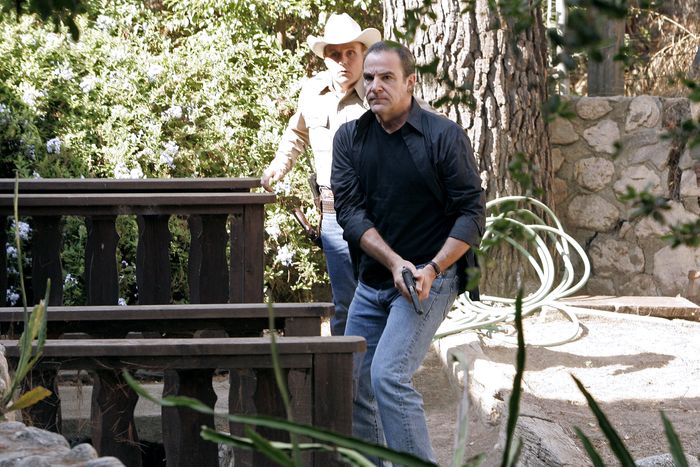
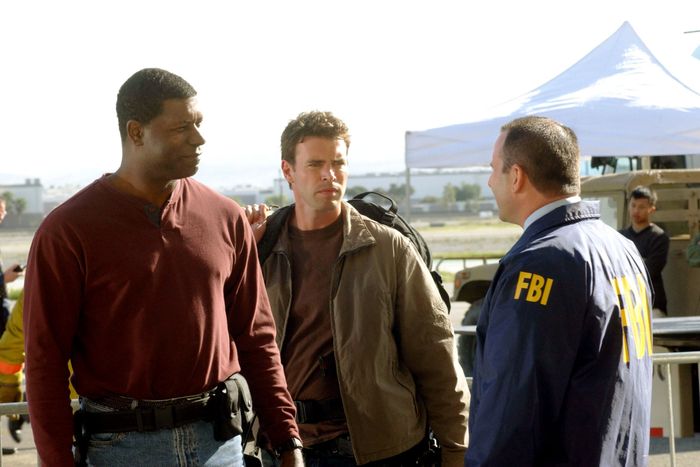

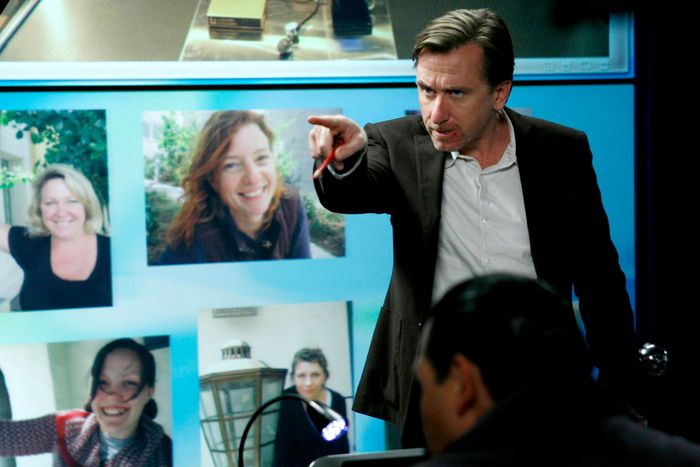
In 2005, Jim was recovering from a bone-marrow transplant ÔÇö like dozens of others who worked at ground zero after 9/11, he had been diagnosed with lymphoma ÔÇö when word began to circulate that CBS was planning a BAU-based show, Criminal Minds. One of the showÔÇÖs stars, Mandy Patinkin, visited Quantico looking for a profiler to base his character on. ÔÇ£They took him around, and he said, ÔÇÿIsnÔÇÖt there anybody with a personality in the FBI?ÔÇÖ So they called me,ÔÇØ Jim said. Patinkin, enthralled by his stories, convinced CBS to enlist Jim as a technical adviser. Every few months, he would fly to Hollywood and regale the writersÔÇÖ room with tales of bank robberies and kidnappings. Because he was still working for the FBI, he couldnÔÇÖt get paid for this; instead, he just asked that the showÔÇÖs writers portray the FBI in a positive light. Back in Quantico, he watched as his old cases were transformed into episodes. ÔÇ£I didnÔÇÖt realize I was giving away millions of dollars,ÔÇØ Jim told me. (Patinkin left the show after two seasons. In a 2012 interview with New York, he called his participation in Criminal Minds his ÔÇ£biggest public mistakeÔÇØ: ÔÇ£IÔÇÖm concerned about the effect it has. Audiences all over the world use this programming as their bedtime story. This isnÔÇÖt what you need to be dreaming about.ÔÇØ)
The FBIÔÇÖs support of Criminal Minds was nothing new. Hollywood and law enforcement have long had a symbiotic relationship. In the 1950s, the LAPD worked closely with the creators of Dragnet, feeding them cases to feature and weighing in on scripts before they were filmed. Hollywood producers working with cops got access, gritty stories, and a veneer of authenticity; law-enforcement agencies got positive attention and engaging recruitment material. By the late 1990s, even the publicity-averse CIA had an official Hollywood liaison.
In 2008, Jim retired from the FBI and moved to Hollywood to work full time on Criminal Minds, first as a consultant and then as a producer and writer. After a career in the field, he found creative work deeply satisfying (and significantly less traumatizing). He helped other former agents get gigs as technical advisers, consultants, and writers on the show; Tim got hired to do stunt driving and supervise explosions.
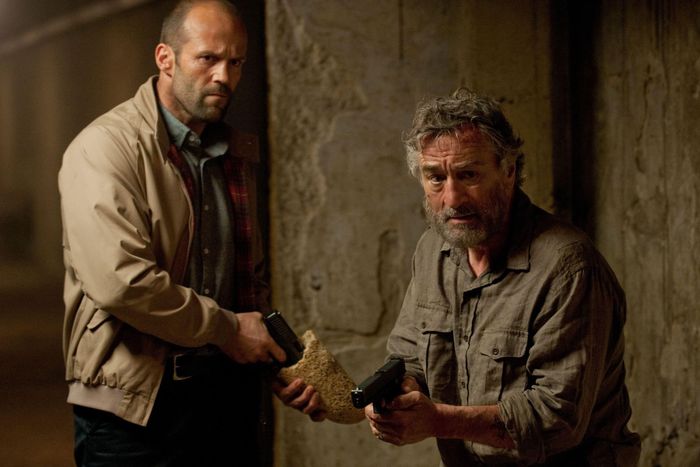
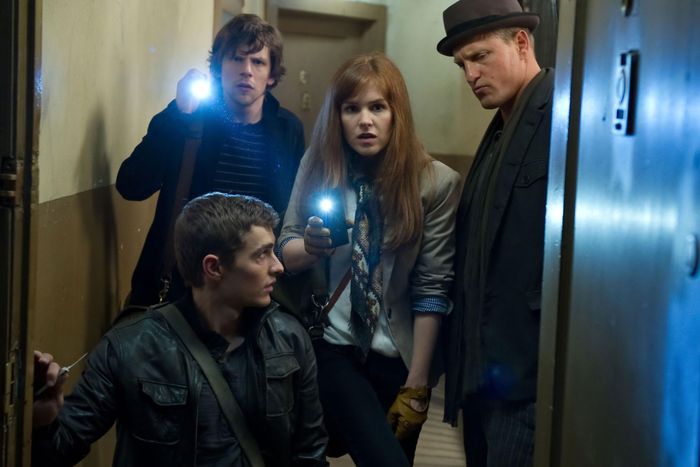
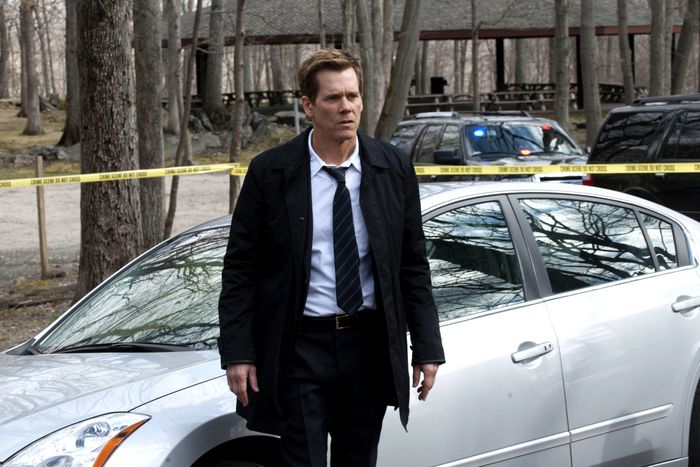
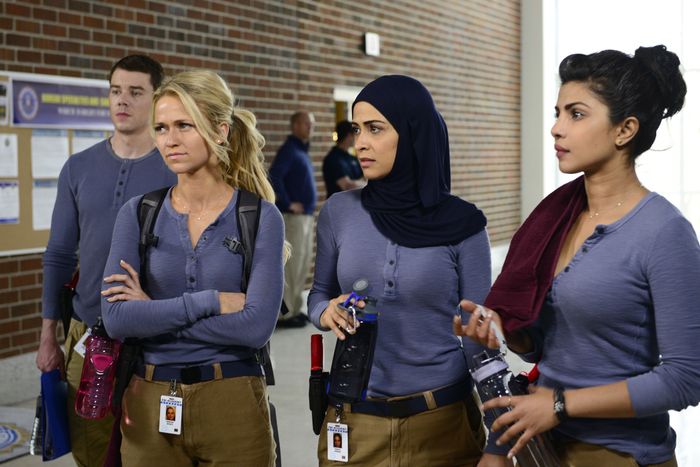
One evening, Jim entertained an acquaintance with some of his best FBI anecdotes. The next day, the guy sent him a treatment for a show based on their conversation. If he had assumed Jim would be flattered, he badly miscalculated. Jim was beginning to understand that his stories werenÔÇÖt just good fodder for dinner parties ÔÇö they were HollywoodÔÇÖs most thirsted-after currency, intellectual property. In 2008, Jim and Tim founded XG Productions, as in ex-G-men, as in former federal agents. (They hired their brother Peter as CEO in 2016.) The companyÔÇÖs goal, Jim said, was to help ÔÇ£people who were coming out of the military or three-letter agenciesÔÇØ build Hollywood connections so they could ÔÇ£educate the public about crimeÔÇØ and monetize their expertise along the way. XG signed up people like Jim Fitzgerald, the forensic linguist who helped identify the Unabomber, and Francey Hakes, a drawling former prosecutor from Georgia in the Nancy Grace mold. (Hakes is perhaps the only person who watched the original Perry Mason, a show about a heroic defense attorney protecting the falsely accused, and came away wanting to be a prosecutor.)
XG has consulted on many of the most widely watched crime programs of the past decade. If youÔÇÖve seen a murder investigation on TV, odds are decent that the Clemente brothers had a hand in it. When writers on FoxÔÇÖs The Following, a Kevin Bacon thriller, wanted to know how a criminal genius might manipulate his followers even after he was locked up, Jim offered psychological insights. When NCIS: Los Angeles needed twisty cases to use as inspiration, Tim provided them. ÔÇ£WeÔÇÖve done it for Dick Wolf shows and CBS shows and Fox shows and Netflix shows and movies,ÔÇØ Jim told me.
Beyond fictional programming, XG supplies news channels and other productions with authoritative talking heads who can walk viewers though disturbing stories. Tim pops up on Fox and CNN to parse terrorism cases; Jim has become a star podcaster, hosting a handful of shows that reach a million and a half listeners a month. I first saw Jim at the 2018 edition of CrimeCon, the annual true-crime fan convention, which XG co-produced that year. He stood onstage in a cowboy hat, looking lanky and out of place in front of thousands of cheering women who had adopted him as an unlikely heartthrob. In the months afterward, whenever I tried to zone out to some murder-y miniseries, IÔÇ»would see his beaky, intelligent face: on CBS talking about JonBen├®t Ramsey, on Oxygen discussing Casey Anthony, on Fox analyzing O.ÔÇëJ. Simpson.
Not every venture has been a success. An internationally focused Criminal Minds spinoff, Criminal Minds: Beyond Borders, for which Tim wrote some episodes and which starred Gary Sinise as a veteran agent and family man based partly on Tim, was widely criticized for being xenophobic (The Hollywood Reporter called it ÔÇ£a shameless combination of international b-roll and Trump Era paranoiaÔÇØ) and was canceled after two seasons.
Twelve years ago, the Clementes began collaborating with a reality-television veteran named Jamie Bruce who had worked on the original AmericaÔÇÖs Most Wanted as well as the first season of The Apprentice. The political rise of Donald Trump depressed him so much ÔÇö ÔÇ£IÔÇÖm part of the team that created the Frankenstein,ÔÇØ Bruce told me ÔÇö that he considered abandoning reality TV. The chance to work with XG reinvigorated him.
Almost three years ago, a delegation from XG went to Fox to pitch a fugitive-hunting show. The program would have an international focus and draw on BruceÔÇÖs experience with the original AMW as well as XGÔÇÖs ties to Interpol Washington, the U.S. arm of the international police cooperative. The pitch seemed to go well until an executive leaned back in his chair and said, ÔÇ£We should just bring back AmericaÔÇÖs Most Wanted.ÔÇØ ÔÇ£I left the room saying, ÔÇÿI canÔÇÖt believe we gave them the idea,ÔÇÖÔÇëÔÇØ Bruce said.
A week later, though, the network got in touch: It was going to reboot AMW, and it wanted XG to co-produce it. ÔÇ£They understand the machinations of crime fighting,ÔÇØ FoxÔÇÖs Wade told me. ÔÇ£They know how to catch the bad guys.ÔÇØ It was the brothersÔÇÖ biggest gig yet: an opportunity to take on a flagship brand and a prime-time slot for a major network.

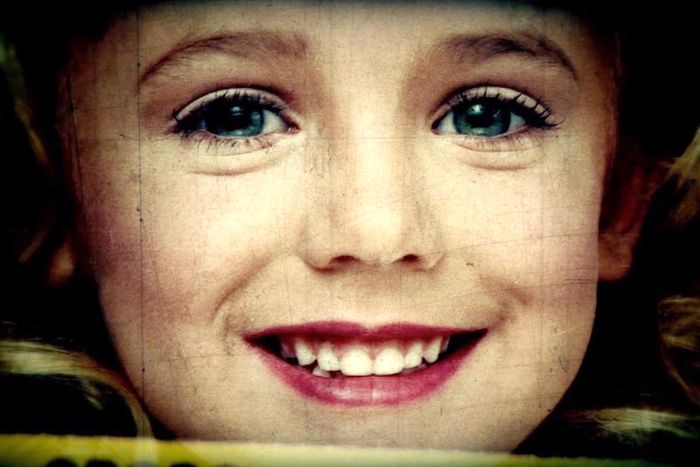
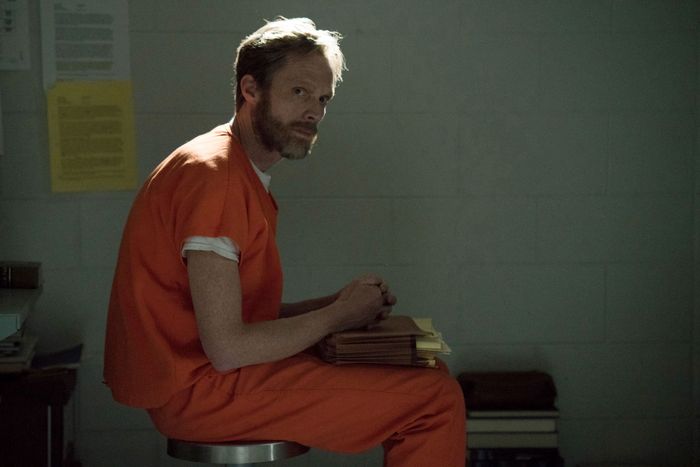

When AmericaÔÇÖs Most Wanted first aired, its creators were hoping that viewers frightened by the rising crime rates of the 1980s would respond to the showÔÇÖs focus on people who had been charged or convicted and then escaped custody. The program would sit somewhere between journalism, advocacy, and entertainment, with audience participation thrown in for good measure. The showÔÇÖs genius was its dual function: It stoked anxieties that anyone could be a victim of crime at any time while positioning itself as a solution, a way to fight back. (According to co-creator Stephen Chao, an early working title for AMW was Electronic Lynching.)
Still, no one had any idea it would become a national phenomenon. At the time, Fox was a fledgling network with only two nights of programming per week. The pilot of AmericaÔÇÖs Most Wanted was shown on just seven stations. ÔÇ£Nobody thought this show was going to work,ÔÇØ said Phil Lerman, who spent 15 years at AMW, ten of them as coÔÇôexecutive producer. For its first episode, the show profiled a convicted child murderer, one of the FBIÔÇÖs ten most-wanted fugitives; four days later, he was arrested based on a tip from a viewer. Later that season, the series featured John List, who, in 1971, had lost his job and, rather than go on welfare, murdered his entire family. A former neighbor recognized him, and his subsequent capture ÔÇö after 18 years on the run ÔÇö made the front page of the New York Times. AMW quickly became FoxÔÇÖs most-watched show and the networkÔÇÖs first program to win its time slot. It was also the most violent prime-time program of 1989, according to the National Coalition on Television Violence. Less than a year after its debut, the Times called it ÔÇ£one of the hottest, and most controversial, shows on television.ÔÇØ
The series was known for staging re-creations of crimes, which blurred the line between fact and fiction. Its creator, Michael Linder, sought out directors of music videos and commercials, rather than journalists, to film episodes since they were better at keeping things fast-paced and stimulating. Directors were encouraged to bring their own flair to the re-creations. ÔÇ£I was known as the comedian ÔÇö I would do dark comedy,ÔÇØ said Bruce, who directed dozens of episodes in the 1990s. ÔÇ£I did one on a terrible man who raped a young girl, and I made him look like an idiot. Just bumbling around, like Fargo. When it airs, the guy watches it and is so pissed off that he ends up calling his ex-wife, whose phone was tapped by the FBI, saying, ÔÇÿIÔÇÖm gonna sue Fox!ÔÇÖ And thatÔÇÖs how they caught him.ÔÇØ
The animating spirit of AMW was its craggy, no-nonsense host, John Walsh. In 1981, his 6-year-old son, Adam, had been abducted from a Florida mall; his remains were found two weeks later. Dissatisfied with the police response, Walsh turned to the media to drum up attention for the case and, later, for reforms in how police handled missing-children incidents. WalshÔÇÖs public grief ÔÇö and his rage ÔÇö was a potent political force, an ideal embodiment of the carceral populism of the times. He pushed Ronald Reagan to establish the National Center for Missing & Exploited Children and lobbied George W. Bush to create the National Sex Offender Registry. As the face and voice of AMW, Walsh ensured that crimes were presented not from a place of journalistic objectivity but from the emotive, righteous perspective of the victim. Journalists couldnÔÇÖt call criminal defendants animals or inhuman monsters, but Walsh could.
Every week, producers sifted through a thousand tragic stories submitted by victims and police officers across the country, picking out a half-dozen or so to be featured on the show. They prioritized viscerally frightening crimes; bank robberies outranked embezzlements. ÔÇ£If a man brutalizes innocent children, that definitely adds points,ÔÇØ Linder said at the time. They also looked for victims whom viewers would find relatable and sympathetic. As an early staffer put it in Walsh and LermanÔÇÖs 1998 book, No Mercy, ÔÇ£YouÔÇÖll get a call, and the caller will say, ÔÇÿMy daughter was killed,ÔÇÖ and youÔÇÖll say, ÔÇÿOh, thatÔÇÖs awful. How did it happen?ÔÇÖ And sheÔÇÖll say, ÔÇÿWell, she had fallen off the wagon and she was back on crack cocaine and she was hooking.ÔÇÖÔÇëÔÇØ Those kinds of cases may have been more representative of what crime in America actually looked like, but they were not what AMW wanted.
The show was based in Washington, D.C., so producers would have better access to federal law enforcement. Some of the producers, particularly those who had once identified as hippies, felt uneasy at their close working relationship with the police. ÔÇ£I had marched against cops as a teenager, and suddenly IÔÇÖm having lunch with the FBI every Tuesday,ÔÇØ Lerman said. Soon, though, they bought into the crusade for justice. It helped that the show was in keeping with the ethos of the era, when liberals and conservatives alike were trying to outdo one another to be toughest on crime.
While AMW didnÔÇÖt disproportionately feature Black and brown fugitives, according to two studies that analyzed its early seasons, it nonetheless overrepresented the danger of violent crime. When the series was accused of being manipulative, sensational, or lurid, its creators had an ironclad defense: They were just doing what it took to give victims a voice and put dangerous criminals behind bars. Conveniently, ratings and justice aligned.
In 1996, Fox canceled the show. Its rabid fan base ÔÇö and a host of law-enforcement agencies ÔÇö petitioned the network to reconsider, and seven weeks later, AMW was renewed with a new subtitle, America Fights Back, and a more intense tone. ÔÇ£When they brought the show back, they kind of took the gloves off John,ÔÇØ Lerman said. ÔÇ£They said, ÔÇÿWe want the furious fugitive chaser, the furious father of a murdered child.ÔÇÖ ThatÔÇÖs when John was really allowed to speak his mind ÔÇö to get as angry as he wanted at the people committing these crimes and express the heartfelt empathy.ÔÇØ
Allying with the police meant AMW regularly got the kind of access that traditional journalists wouldnÔÇÖt. After planes hit the Twin Towers on 9/11, Walsh and his producers piled into a van and drove straight to Manhattan, where blockades prevented anyone, media included, from getting close to the site. ÔÇ£As we reached the checkpoints, again and again, the police would stop us,ÔÇØ Walsh wrote in Public Enemies: The Host of AmericaÔÇÖs Most Wanted Targets the NationÔÇÖs Most Notorious Criminals. ÔÇ£Then they would see me, and realize, this isnÔÇÖt the media. ItÔÇÖs AmericaÔÇÖs Most Wanted. They knew we were there to help.ÔÇØ For a day, they were the only press at ground zero, and over the next few months, the show pivoted to cover AmericaÔÇÖs new bogeymen: terrorists.
AMW was canceled in 2011 (followed by a brief revival on Lifetime until 2013), but its legacy lived on. ÔÇ£A lot of people who grew up watching these shows remember being scared all the time,ÔÇØ Alyssa Smith, a doctoral student at the University of Chicago who studies true crime, wrote in an email. ÔÇ£It creates this entire worldview where the only option for addressing violence is to get as much evidence as you can and go to the police. In their subtle and entertaining way, these early true-crime shows were a form of propaganda in upholding cultural myths about the value of policing ÔÇö that it was necessary, that it worked (even though AMW itself proved that police needed help from the public to succeed).ÔÇØ
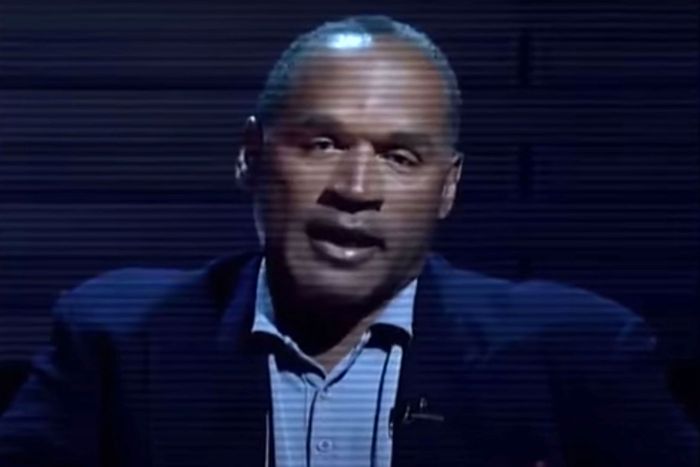
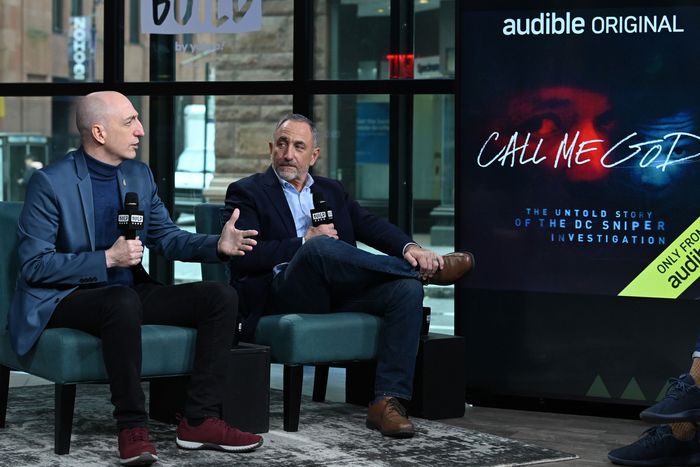
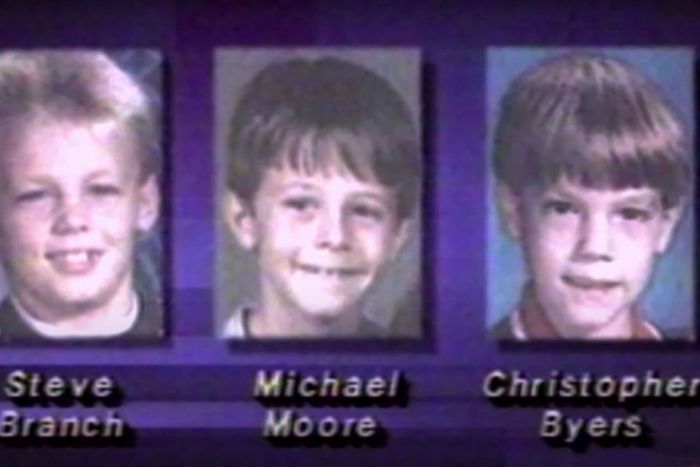
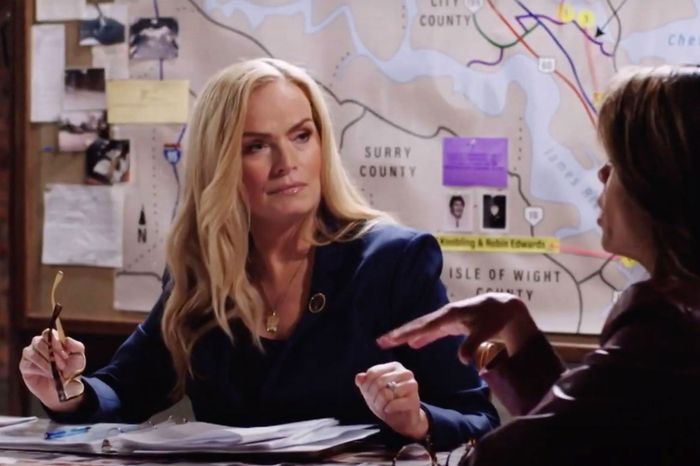
When I met Jim Clemente at his Los Angeles apartment last fall, it took me a moment to reconcile his forceful onscreen persona with the soft-voiced, weary man in front of me. It had been a difficult year, in which heÔÇÖd lost his father as well as a number of close friends. He was vigilant about COVID protocols (which, on occasion, has brought him into conflict with his brother Tim, who, in the two days IÔÇ»spent with him, never once wore a mask).
Still, something in him seemed to snap back into focus when he shared stories about his days as a profiler. He told me that a psychological test had once measured his logical abilities in the 98th percentile and that his ÔÇ£clarity scoreÔÇØ was even stronger ÔÇö essentially perfect. I asked him whether, in his career as a profiler, he had ever been wrong. ÔÇ£I can tell you that thereÔÇÖs been at least a dozen cases where people thought IÔÇ»was crazy but it turned out to be true,ÔÇØ he said, then launched into another triumphant narrative: a kidnapped girl, a flash of insight, a just-in-time apprehension. IÔÇ»had heard him tell this one before on one of his podcasts, but when I mentioned that, he kept going, as if the story were a circuit that needed to be completed. After a little while, I relaxed into it ÔÇö the satisfaction of a neat ending, the chaos of crime made legible by a perfectly clear mind.
It had been more than two years since that initial pitch meeting at Fox started the process of resurrecting AMW. In the ensuing months, the Clementes had called their law-enforcement contacts and come up with a pool of potential fugitives to feature on the show. The pilot was finally slated to film later that week. ÔÇ£ItÔÇÖs been a long time coming,ÔÇØ Jim told me. The pandemic had delayed production, and FloydÔÇÖs death caused complications of a different kind. In the weeks after his killing was caught on-camera, it seemed as though Hollywood might finally reckon with its symbiotic relationship with law enforcement. A&E stopped production on Live PD. Cops, which had been on the air for 31ÔÇ»years, was canceled. More than 300ÔÇ»Black directors, actors, and writers signed an open letter calling on artistic institutions to break ties with the police. Even some members of the original AMW production began to question their role. ÔÇ£Look, I grew up with Dragnet and all those shows that showed cops could do no wrong,ÔÇØ Lerman told me. ÔÇ£To whatever degree anybody who worked in television helped perpetuate that ÔÇö that has to give you pause.ÔÇØ
Not surprisingly, the brothers had different reactions to the nationwide protests against police brutality. Jim devoted several episodes of his podcasts to discussions of racial disparities in policing, while Tim retweeted the Daily Caller, railed against rioters, and tweeted angrily about Ibram X. Kendi, author of the best-selling How to Be an Antiracist, calling him a ÔÇ£racist #fraud conman.ÔÇØ Despite their differences, though, both brothers had staked their careers on telling stories in which cops were the good guys ÔÇö a kind of narrative that, at the moment, seemed to be teetering on the edge of obsolescence.
Because of the pandemic, only a small crew was on set at FoxÔÇÖs studio lot to film the new AMW pilot in early October. Tim and IÔÇ»viewed a live simulcast from a production-company office in Beverly Hills. By this time, the mood of the country had shifted again. Support for Black Lives Matter, which had surged over the summer, had retreated to its pre-June levels. Fox hadnÔÇÖt fully committed to airing the reboot, but XG wasnÔÇÖt worried. ÔÇ£This is an opportunistic business. ItÔÇÖs not a political business,ÔÇØ Bruce told me. ÔÇ£People are like, ÔÇÿHollywood is liberalÔÇÖ ÔÇö no, no, no. TheyÔÇÖre opportunists.ÔÇØ
The showÔÇÖs new host was Elizabeth Vargas, a former co-anchor of 20/20 and ABCÔÇÖs World News Tonight. Tim and IÔÇ»watched her walk through a virtual crime scene as she described a drug dealer who had stabbed a man to death in 1980 before escaping from two maximum-security prisons. ÔÇ£IÔÇÖm sorry ÔÇö IÔÇÖm smiling too much,ÔÇØ Vargas said. ÔÇ£I shouldnÔÇÖt be smiling.ÔÇØ
Next, Jim and Vargas showed off another of the showÔÇÖs gimmicks: an age-progressed life-size 3-D avatar derived from the fugitiveÔÇÖs 1991 mug shot. Standing next to Jim, the avatar looked realistic but oddly smooth, like a video-game character beamed onto a television set. A second figure popped up next to the first ÔÇö an artistÔÇÖs rendering of what the fugitive might look like if he were working with a drug cartel in Mexico. ÔÇ£HeÔÇÖd be much more hardened,ÔÇØ Jim said. The second avatar, paunchier and with slicked-back hair, grimaced. A third avatar popped up wearing a colorful, patterned shirt and tight white pants. ÔÇ£I think the most likely scenario is that he hooked up with a wealthy woman, and theyÔÇÖre living maybe in Central America or the Caribbean,ÔÇØ Jim said. ÔÇ£He could be living on her yacht in Jamaica.ÔÇØ
The updated version of AMW leans more heavily on profilers like Jim, who will explain the psychology of criminal behavior and speculate about what fugitives might be up to now. In a world saturated with true-crime programming, audiences donÔÇÖt just want to see crimes depicted, Bruce told me; they want to understand the details of how they get solved. ÔÇ£Everybody wants to know about process now. Back in the ÔÇÖ90s, nobody cared about process,ÔÇØ he said. Producers have sought out a diverse group of fugitives, racially, geographically, and otherwise. ÔÇ£We have a number of women fugitives, and I think thatÔÇÖs great,ÔÇØ Vargas said. Subjects profiled in the first handful of episodes include a former police officer turned scam artist, a mother wanted for abducting her own child, and a former member of the U.S. military who is wanted for murder. While the showÔÇÖs original iteration paid special attention to crimes against children (arguably contributing to the ÔÇ£stranger dangerÔÇØ panic), the reboot focuses on less viscerally alarming crimes: fewer (if any) dead children, more financial fraud.
The new incarnationÔÇÖs creators are hoping its cases will go viral on social media. IÔÇ»asked Tim about some of the pitfalls of crowdsourced crime solving ÔÇö namely misidentification and vigilante justice ÔÇö but he didnÔÇÖt seem overly concerned. ÔÇ£The cancel culture that occurs now, we donÔÇÖt want to do that,ÔÇØ he said. ÔÇ£But if itÔÇÖs the wrong guy, youÔÇÖre going to clear that up very quickly.ÔÇØ
Later, Vargas assured me that last summerÔÇÖs protests against police brutality were unrelated to the investigations depicted on the show. ÔÇ£ItÔÇÖs apples and oranges,ÔÇØ she said. ÔÇ£WeÔÇÖre dealing more with the FBI and the U.S. Marshals. WeÔÇÖre not talking to the police officers who pull over an African American man for speeding or for having a taillight out. We are dealing with cases that are a little bit further up the food chain. This issue around Black Lives Matter and local jurisdictions isnÔÇÖt quite as applicable to the show.ÔÇØ Many of the FBI agents and other law-enforcement experts on the show are women of color, she pointed out, and many of the fugitives are white men.
Still, AMW hasnÔÇÖt changed its basic formula. Hakes, who serves as a senior producer on the show (and regularly appears on Tucker Carlson Tonight to talk about things like Hunter BidenÔÇÖs laptop and the leftÔÇÖs ÔÇ£war on policeÔÇØ), told me that working on the series was akin to being ÔÇ£back in the saddleÔÇØ as a prosecutor: ÔÇ£A lot of us feel like weÔÇÖre back on a mission, if you will.ÔÇØ Which is to say that even if the cast of characters is more diverse, the show still offers an explicitly one-sided view of justice. While its creators argue that it features only ÔÇ£the worst of the worst,ÔÇØ the reality is more slippery than that. Aired between segments on international fugitives are snippets of security-camera footage of muggings and holdups. Like its previous iteration, the new AMW succeeds by convincing viewers of a few seemingly simple ideas: Crime is happening all around us. You too could be a victim. Keep an eye on your neighbors. If something doesnÔÇÖt sit right, call the cops (or the show).
In the screening room, I nibbled at a salad while I watched footage of a convenience store getting robbed. ÔÇ£All over the country, crimes are committed every day,ÔÇØ Vargas said somberly, ÔÇ£and police are asking for your help.ÔÇØ Tim leaned over and showed me an alert on his phone: Deadline was reporting that Paramount had quietly renewed production on Cops. He grinned. ÔÇ£Maybe pastry chefs arenÔÇÖt as violent,ÔÇØ he said, ÔÇ£but theyÔÇÖre not as exciting either.ÔÇØ

